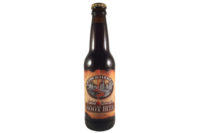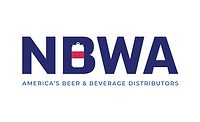Hank's Beverage Co.: More than Root Beer
Hank’s Beverage Co.: More than Root Beer
By ELIZABETH FUHRMAN
A proven way to distinguish a company from competitors in any category is through packaging. Hank’s Beverage Co., Trevose, Pa., maker of gourmet carbonated beverages, realized that in order to get into the game, its products needed to put on their game face.
Hank’s first made a name for itself with
Hank’s Gourmet Root Beer in 1995. Bill Dunman, founding partner and
general manager for Hank’s, entered the beverage business as a
non-alcohol beverage distributor in Maryland and met his current partners
in Hank’s, who were in the beer distribution business in
Philadelphia.
Together they formed a joint partnership in a new
non-alcohol beverage distribution business. Although the group did well,
Dunman and his partners realized they were missing a key product —
brown bottled root beer. Both had distributed brown bottle root beers
before and understood the potential in the product.
With other brown bottle root beers tied up
contractually in the market and a desire to enter into the manufacturing
side of the business, Hank’s felt that manufacturing root beer
“was a relatively safe foray into the manufacturing side of the
business,” Dunman says.
In 1996, Hank’s left the distribution business
to focus entirely on beverage manufacturing. That same year, the company
launched Diet Root Beer, Black Cherry and Vanilla Cream varieties.
“It gave us four flavors to go out there and
really be a factor,” Dunman says. “It created a little position
for ourselves and visibility in coolers, and we really considered that to
be our starting point.”
Premium portrayal
During the next few years, Hank’s added more
flavors, reaching as many as 10 soda flavors at one point. But retailers
only wanted to carry the top five or six flavors, so Hank’s evolved
to the six sodas it offers now: Root Beer, Diet Root Beer, Vanilla Cream,
Black Cherry, Orange Cream and Birch Beer.
With its original distribution network in
Philadelphia, the lineup expanded through the East Coast and grew
nationally. Hank’s Beverages now has distribution in 45 states,
although the supply is limited in some states.
Root Beer, which holds 41 percent of the sales, is the
leading flavor for Hank’s in volume through all accounts in the
United States. Black Cherry, Orange Cream and Vanilla Cream have an equal
share at close to 15 percent. Diet Root Beer sells well in supermarkets,
especially in upscale areas, the company says. Additionally, Birch Beer, a
Northeast regional flavor, is gaining popularity in other areas of the
country.
The beverages initially launched in a long-neck stock
bottle with a pressure-sensitive label.
“About two years ago, we came to the conclusion
that we really needed to take the product and try to set it apart from a
lot of the competition that was hitting the market,” Dunman says.
“In the course of the past 12 years, it’s been a lot of new
brands, and a lot of them were using the long-neck bottle that we were
using, and the pressure-sensitive label wasn’t as exotic as it used
to be.”
Hank’s contacted Saint-Gobain Containers Inc.,
Muncie, Ind., with the intention of creating a proprietary bottle for its
product, and at the same time Dunman started working with Star Label
Products, Fairless Hills, Pa., to develop a proprietary label system. It
took Hank’s a year and a half to complete the project, and the result
was a distinctively shaped 12-ounce brown glass bottle that is embossed
with the Hank’s logo. The bottle features three raised oval panels,
displaying a new metallic, pewter-looking, embossed body and neck label, and a back clear label presenting the
nutrition facts. The embossed labels carry over the tactile feel from the
glass bottle.
“We just tried to make the bottle as unique,
upscale and premium as we could, because we found that consumers had a
perception of quality gourmet products or old fashion-type products,”
Dunman says. “They expected them in nostalgic-type bottles with
embossing.”
The company’s hard work paid off with consumers
following its May 2006 launch. Additionally, Hank’s new glass bottle
won a 2007 Clear Choice Award for best Carbonated Beverage from the Glass
Packaging Institute.
During the same time that it upgraded the packaging,
Hank’s also reformulated its line to use sugar as its sweetener. It
launched the new formulation with the new bottle.
“That was a huge move for us,” Dunman
says. “...We were concerned about changing the product because
people really liked the brand. We were also concerned about the effect that
sugar might have on it, but it actually enhanced it.”
New growth
While distribution and sales continue to increase for
Hank’s Gourmet Beverages, the company feels more growth will come
from line extensions than from adding new flavors, Dunman says.
Hank’s recognized that consumers were looking for better-for-you,
functional and natural products, and tried to incorporate these features
into its new lines.
“What we saw is that brown bottle root beer is a
fairly small niche, and there are quite a few really nice competitors out
there,” Dunman says. “We decided to get away from that a bit
with our line extensions. We didn’t want to go off the board so
people didn’t associate the new products with Hank’s brand, but
we wanted to go far enough out of the box to hopefully create something a
little different, a little unique, and something with some novelty to
it.”
For the spring of 2008, Hank’s will release
Hank’s Gourmet Infusions, a line of sparkling, all-natural beverages
with vitamins, calcium and antioxidants. The drinks, initially developed in
Green Apple and Berry flavors, contain natural
vitamin C, E, B12 along with calcium derived from skim milk and cream, and
EGCG from green tea. The Infusions contain no preservatives, artificial
colors or flavors, caffeine, and are low sodium, the company says.
The company is also in the development stages for
another better-for-you, all-natural beverage line that will launch later
next year.
“I think that one of the important things for us
as a company is to create some new products,” Dunman says.
“...By opening up and trying to get into some of
these other segments like the all-natural, I think it’s opening a lot
of doors for us. It also brings some interest to our company, and hopefully
people will recognize that we’re more than just a root beer company and that we are trying to be innovative with new products
and work in a direction that we feel consumers are going. We want to be
looked at as more of a beverage company than just a root beer company.”
Looking for a reprint of this article?
From high-res PDFs to custom plaques, order your copy today!





